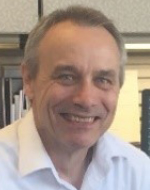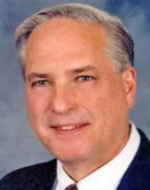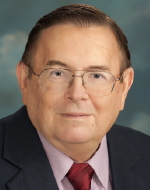- Association News
Summary
Meet ISA Fellow John Sorge, ISA Virtual Conference Explores Evolution of Process Analyzers, Student Section Develops a Women’s Safety App, In Memoriam,
Jump to:
- ISA Fellow John Sorge
- ISA Virtual Conference Explores Evolution of Process Analyzers and More with JD Tate Keynote
- Student Section Develops a Women’s Safety App
- In Memoriam: Samuel M. Herb
- In Memoriam: William L. Mostia, Jr.
- ISAGCA Webinars
- New CAPs and CCSTs
Meet 2020 ISA Fellow John Sorge

Sorge began his journey into the instrumentation and control research realm by earning a degree in mechanical engineering at the University of Alabama. His linear control design professor, Dr. Youngblood, who later became his advisor, encouraged him to focus on design and simulation. “Dr. Youngblood worked with the Air Force, and I assisted him on a couple of contracts involving air-to-air missile guidance optimization,” he said. “Due to his encouragement and connections, I obtained summer employment doing control V&V [verification and validation] studies on space shuttle main engineer controllers then undergoing testing at NASA’s Stennis test facility.”
Later in his career during the late 1980s and 1990s, Sorge became an integral member of the research effort that led the industry in the U.S. Department of Energy’s Clean Coal Technologies demonstrations of NOx reduction technologies. These demonstrations influenced the rulemaking and the eventual deployment of these technologies by utilities.
Sorge served as Southern Company’s advisor to the Instrument, Controls and Automation program of the Electric Power Research Institute (EPRI) from its inception in the late 1990s until his retirement in late 2018. He also served as utility chair of that program for more than 10 years during that period. In collaborating with ERPI, Sorge participated in demonstrations of many varied technologies, including advanced controls, simulators, wireless sensors, and fleetwide monitoring, as well as demonstrations of Southern Company’s Monitoring and Diagnostic (M&D) Center.
Sorge became an ISA member in 2009. “I participated in the ISA Power Industry Division [POWID] almost every year through my retirement in 2018,” Sorge explained. He served on standards committees; developed conference technical sessions; served as program chair for the annual POWID Symposium; and authored or coauthored more than 75 technical papers. “Most of my standard engagement has been with ISA-77.22, Power Plant Automation, and ISA-100, Wireless Systems for Automation,” he said.
In recognition of his contributions toward the development of engineering concepts in the field of instrumentation and controls for the advancement of electric power generation, POWID recognized Sorge in 2016 with its Achievement Award. POWID also recognized him in 2018 with a Service Award. That year, the ISA Birmingham Section nominated him for the Engineering Council of Birmingham Engineer of the Year award, which he received in February 2019.
Sorge said he is proud that he had the opportunity to work on interesting topics with his colleagues over the years. “I hope that I was able to return, in some part, the favor by providing guidance to student interns and colleagues who were in the initial stages of their careers,” he said. Now, he said he would advise young engineers that “if an opportunity for interesting and rewarding work makes itself available, consider it and take the risk.” —By Melissa Landon
ISA Virtual Conference Explores Evolution of Process Analyzers and More with JD Tate Keynote
Speaking via computer to a virtual room full of process engineers and instrumentation professionals, JD Tate, PhD, kicked off the ISA Analysis Division Virtual Conference with a presentation containing classic truisms, current challenges, and the continuing evolution of process analyzers that he dubbed an “unfinished revolution.” The virtual event, part of ISA’s Process Control & Instrumentation Series, was a pandemic-era extension of what had been a successful live conference and tradeshow in years past.
Tate’s long career as senior technical leader for Dow Chemical’s Process Analytical team—one of the largest of its kind in industry—made him perfectly suited to present the keynote speech for this virtual event that, on 23 March 2021, brought speakers from Dow, Insight Analytical Solutions, Informetrix, COSA Xentaur Corporation, and others to discuss the state of the art of online analyzers and the people who run them.
“We are all here to make money and to do it safely and responsibly,” said Tate. “You must manage all these competing constraints. The trend is to install more measurements, not less.”
What’s driving change in industry is something many will recognize,” he added. “At Dow we started off with about 15,000 analyzers in 2003, and [we have] more than 22,000 in 2020. Our assets have gone up. The resources used to support these assets have been cut by 75 percent. Expertise and resources have gone down, and there’s a limitation on how efficient you can be supporting those assets. Something has to change.”
Many of the crackers used in the industry are relatively old, so users face the challenge of retrofitting them—upgrading their capabilities in the current paradigm. Though the current practice involves sending someone into the field to check the health of the equipment, the future will involve digital systems that allow a person to check on the health of the system from anywhere in the world, Tate said.
“It used to take an act of Congress” to add something with wireless capabilities to a plant, “but today, most facilities have whole teams to manage wireless capabilities,” Tate said.
However, the move to wireless assets comes with its own set of problems. For example, production, shipping, installation, operational security, data security, and reliability—as well as finding the expertise to troubleshoot issues relating to new devices. These devices are complicated, and they are all different, Tate said. They are not like cars that all operate similarly. Unfortunately, many process instruments have lots of moving parts, are expensive to install, are highly customizable, and require skilled experts to maintain.
Tate predicts that automated self-diagnostics, preventative maintenance, and remote support will help inform the new model for online process instruments. Hopefully, as we work to standardize online process instruments, there will be a focus on building on modern open protocols, creating platform-agnostic tools that are not dependent on environment, maintaining a security mindset, and prioritizing ease of use, he said.
Other presentations and papers in the virtual conference covered spectroscopy, chromatography, electrochemistry, and sample handling, focusing on how to succeed in today’s challenging environment. Register to view the entire program on demand via https://isaautomation.isa.org/virtual-events-program. —By Melissa Landon
Student Section Develops a Women’s Safety App
Archit Kohli is the president of the ISA Mukesh Patel School of Technology Management and Engineering (MPSTME) student section in Mumbai, Maharashtra, India. The ISA MPSTME section aims to create meaningful networks between students and institutions, with the goal of increasing student participation and interest in automation and related fields.
Most recently, Kohli and other members of the MPSTME student section set their sights on developing an app to address women’s safety in India. ISA sat down with Archit to discuss the specifics of building this app—and the MPSTME section’s plans for the future.
ISA: What inspired the ISA MPSTME section to develop a women’s safety app?
Archit Kohli: The issue of women’s safety has been a hot topic of discussion around the world for as long as one can remember. When the pandemic started, the world witnessed some shocking events that brought to light dangers that women face daily. Our goal is to do our part to help make India, and the world, a safer place for women.
ISA: Can you discuss the process of building the app?
AK: There were three main stages we went through in the development of this app. The first was the planning stage, which allowed us to zero in on the actual problem we wanted to tackle: the issue of women’s safety. The pandemic has forced people to work from home and online, which meant that an app was our best option. We started by asking the most important question involved in developing an app for women’s safety: what makes a “good” women’s safety app? This meant using surveys, which we conducted across the country via Google Forms. We reached out to women of different backgrounds and asked for their opinions on what would make the app foolproof.
We used the responses in the second stage, which was the building stage. We filtered and chose the best or most relevant ideas, which could be converted into working algorithms and implemented into a working module. This led us to the third stage, or the implementation stage. We believe this app is a very viable solution to assist authorities in matters pertaining to women’s safety. The biggest challenge, however, is reaching out to the correct audience. It becomes a waste if a solution exists for someone who doesn’t even know of its existence. Informing the masses is a long process that we are still working on, but I am confident that we will be able to accomplish this herculean task.
ISA: What are the main features?
AK: The app is called “Eve” and has the following standout features:
- SOS mode, which allows audio and video recording; sends a prewritten SMS to preset emergency contacts along with Google Maps location links; locks the screen and prevents perpetrators from ending specific vital background processes; and allows the user to make a call to the nearest police station based on location data.
- Location ratings. Areas around the users will be given a safety rating based on the presence of landmarks and data from the National Crime Records Bureau.
- Safest route shows users the safest path from their location to their destination based on the location rating.
ISA: What happens now that the app has been developed?
AK: With Eve scheduled to launch on the Google Play Store, we are now focusing our efforts on reaching out to as many women as possible to inform them about this app and encouraging them to try it out. Additionally, we are working on developing it for the iOS platform. Our main goal is to ensure that women see Eve as an option to ensure their safety. The most important thing we can have is their trust in our app. Once the presence and benefits of this app have been established in India, we aim to expand it globally.
ISA: Any advice for other ISA student sections who might want to do something similar?
AK: Firstly, I want to encourage other ISA sections to take up social initiatives. We are fortunate enough to be blessed with the life we have today. As the generation that will lead the future, it is our moral duty to ensure the existence of a safer and more sustainable environment. The only thing I request any other section do when taking up social initiatives is to thoroughly understand the background of the particular issue they aim to solve before they move ahead. Just knowing the problem is never enough. Familiarizing oneself with the origin of the problem and its causes is the only way of ensuring that a strong foundation is built upon which the problem can be tackled. If any section wants to collaborate with us in our social efforts, I encourage them to reach out to us via the official ISA MPSTME social media handles, and we will be more than happy to help.
—By Christina AyalaSubscribe to ISA Interchange at https://blog.isa.org/subscribe to read more.
In Memoriam: Samuel M. Herb

He was a member of the ISA95 committee, developed five online courses and CDs on control systems, and received the ISA Eagle and Distinguished Society service awards, as well as the Donald P. Eckman award for education excellence. His ISA publications include co-author of the textbook Understanding Distributed Process Control, author of chapters in Practical Guide Series on Continuous Control, and author of the textbook Understanding Distributed Processor Systems for Control, from which seven “mini-books” were developed.
Herb worked in the utility and process controls industries for nearly five decades and was the owner of JAOMAD Consultancy. He had previously worked at Invensys Process Systems, Honeywell, Leeds & Northrup, Moore Process Automation, and Siemens. His background ranged from design and testing of components within instrumentation to responsibility for overall product line viability. For more than a quarter century, he was involved with microprocessor-based distributed process control systems.
He was most recently adjunct professor of process technology at Salem Community College in N.J. and was deeply involved with his faith and his church. Boy Scouts were also central to his life, as was a lifelong passion for trains. He was the son of the late Samuel F. and Mildred V. Herb, the oldest of four siblings, husband to the late Judith A. (Oeach) and companion to Mary Anne Devine, and the father of four children and grandfather of six.
In Memoriam: William L. Mostia, Jr.

“Bill contributed the new motor shutdown annex for the upcoming edition of ISA-TR84.00.02, and he had a practical, field-proven belief in maintenance that supported the ISA-TR84.00.03 effort from its earliest edition,” according to Angela Summers, president of SIS-TECH Solutions, LP. “He contributed the extensive instrumentation fundamentals appendix in CCPS’s Safe Automation of Chemical Processes book, covering field sensors through final elements, [but] his interests and contributions were broader than these topics. He published many papers on various control system topics over the years and had become very interested in artificial intelligence and IIoT. Bill mentored many of us on this committee over the years.”
Mostia had more than 45 years of experience in the process industries, primarily at petrochemical companies including BP, Amoco, Texas Eastman, and Dow Chemical Co. He had extensive experience in process safety, safety instrumented systems, electrical safety and grounding, cybersecurity, instruments in hazardous areas, and PLCs.
In addition to his book on technician troubleshooting, he contributed to books such as ISA’s A Guide to the Automation Body of Knowledge, Third Edition. Mostia was a registered Professional Engineer in the State of Texas (1982) and had a BSEE degree from Texas A&M University (1977).
ISAGCA Webinars
Assessing and Managing Cybersecurity Risk: Part 120 May | 1:00 p.m. ET
Assessing and Managing Cybersecurity Risk: Part 2
12 August | 1:00 p.m. ET
ISAGCA Security Strategies: Detailed Pros and Cons to Different Approaches
11 November | 1:00 p.m. ET
Register for upcoming and on-demand webinars here.
New CAPs and CCSTs
The following individuals have recently passed either ISA’s Certified Automation Professional (CAP) exam, or one of the three levels of Certified Control Systems Technician (CCST) exam. For more information about either program, visit www.isa.org/certification/certificate-programs.
Certified Control System TechniciansLevel 1
Scott William Tack, U.S.
Donald F. Schroeder, U.S.
Jan Di Pierro, U.S.
Carl W. Jensen, U.S.
Larry Guth, U.S.
Jason Van Buren, U.S.
David Halter, U.S.
Paul Kaczorowski, U.S.
Seth Young, U.S.
John Gowder, U.S.
Danny Cooper, U.S.
Brian D. Akins, U.S.
James Frye, U.S.
Andrew Parker, U.S.
Jerry Lillard, U.S.
Jason McLaughlin, U.S.
Ian Follette, U.S.
Level 2
Reagan C. Ruiz, U.S.
David L. Trumbull, U.S.
Todd J. Braun, U.S.
Brandon Weibley, U.S.
Carl W. Jensen, U.S.
Level 3
Omar H. Abu Jadouo, U.S.
Todd D. Erwin, U.S.
Certified Automation Professionals
Asif Iqbal, Saudi Arabia
Junghak Shin, Canada
Linnea Lubke, U.S.
Fahad F. Al Furaih, Saudi Arabia
Ian Loke, Singapore
Quang M. Tran, U.S.
Jesus Andres Tous Tejada, Colombia
James Hess, U.S.
Sudheer Prabhakaran, Saudi Arabia
Stephen Byl, Canada
Mark Anthony Meso, Australia
Reader Feedback
We want to hear from you! Please send us your comments and questions about this topic to InTechmagazine@isa.org.


